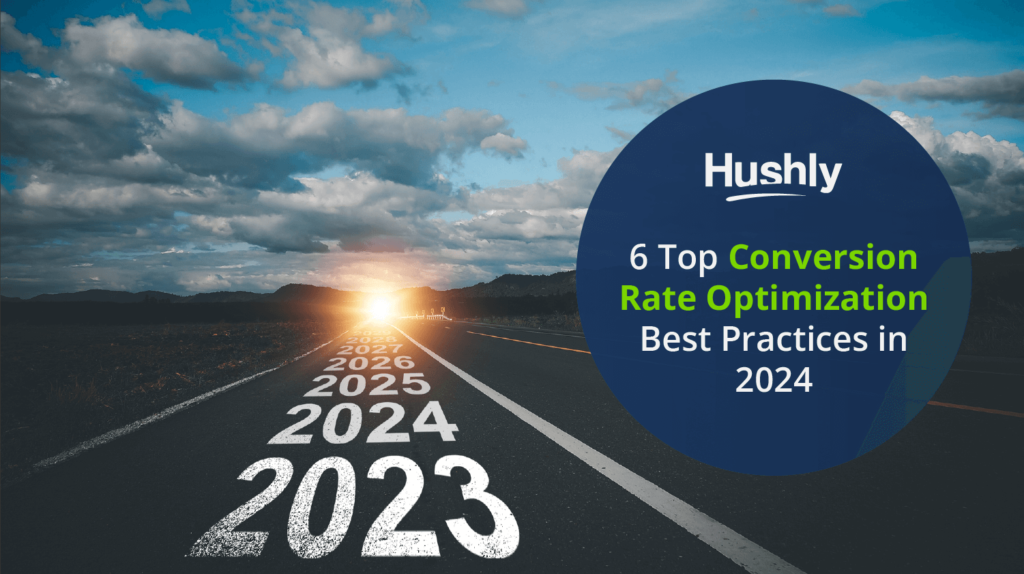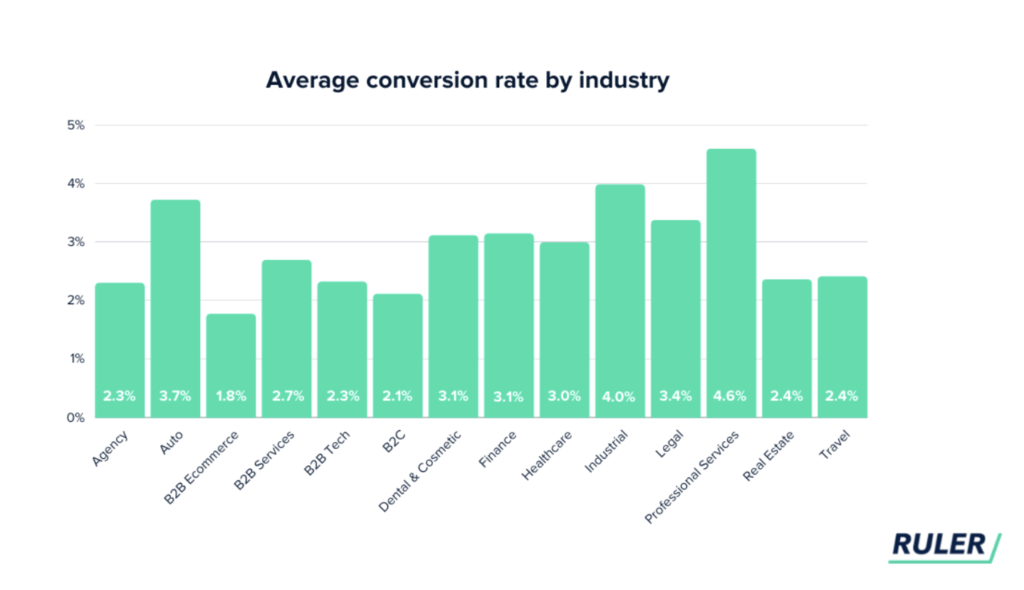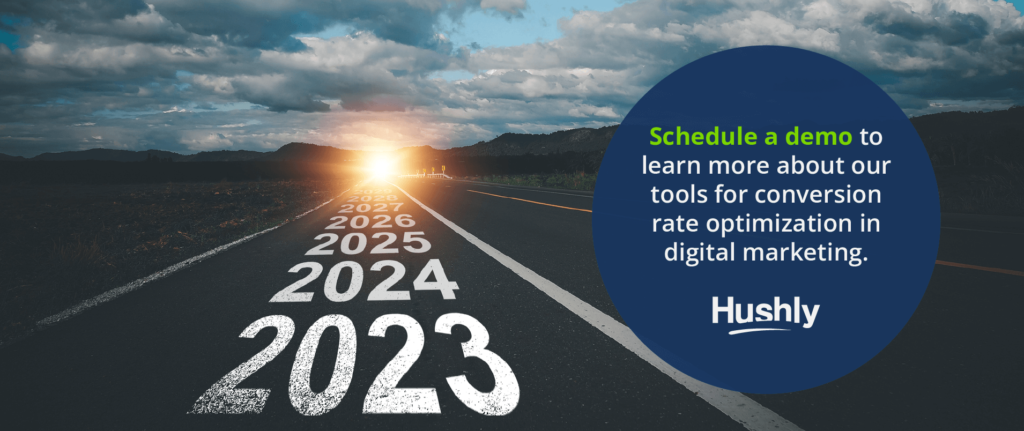“We doubled our website traffic this month.” Your marketing assistant proudly proclaims.
“That’s fantastic! And how are our sales looking?”
The assistant looks confused before replying that they remained the same.
In your rush as a marketer to generate the numbers, we must not forget to also include strategies for converting those numbers to customers. Otherwise, those numbers remain just that, numbers.
Today, we bring you conversion rate optimization best practices that will up your marketing game in 2024 so you see a more significant payoff from your marketing strategies.

How to Improve Conversion Rate Optimization
Conversion rate optimization (CRO) refers to the process of boosting the percentage of total leads completing your desired action.
When you hear “conversions,” your mind most likely jumps to your biggest win: sales.
Yes, converting leads into customers is a huge business success, but it’s far from the only conversion worth celebrating and noting.
Here are a few other conversion rate optimization examples.
Conversions can be the percentage of website visitors who fill in a form and become leads. It can also be the percentage of visitors on a landing page who signed up for your webinar.
Whenever you have an action you hope visitors will complete, measure the percentage of visitors who complete it to discover your conversion rate.
Here’s how that looks laid out as a formula:
Conversion rate % = (Total Number of Conversions/Total Number of Visitors) x 100
To increase your conversion rate optimization percentage, you need to convince more visitors to act through personalization, convincing marketing, and beneficial rewards.
What Is the Average Conversion Rate?
Conversion rates vary drastically by industry and business size. For instance, larger B2B businesses generally have higher conversion rates than B2C businesses. That’s because B2C businesses tend to throw wide nets to draw in thousands of leads, hoping one will convert.
B2B businesses are more likely to use account-based marketing due to their higher-value products. That means they are targeting leads from the start. This results in a higher quality lead count, which provides a higher percentage of converted leads.
You will also see conversion rate changes depending on the desired action. Convincing leads to joining a free webinar will have a higher conversion rate than convincing leads to sign up for your tech services because it’s a more significant commitment.
That’s why you need to dig into the data if you want to know how well your business is doing. Check out how similar companies perform to gain a better perspective of your conversion rate in your industry.
To give you a good start, the average conversion rate across all industries is 2.9%. However, B2B tech has an average 2.3% conversion rate.
Looking at just filling in forms rather than purchasing, you see a slight difference. The average form conversion rate across industries is 1.7%, while B2B tech’s form rate is 2.1%.

Image from Ruler Analytics
How Is Conversion Rate Optimization Changing in 2024?
What are the most prominent players in conversion rate optimization going into 2024?
Artificial intelligence and machine learning are leading the way in opening new doors for conversion rate optimization.
These two booming technologies allow you to:
- Create content at scale for unlimited personalization.
- Analyze larger datasets to understand customers better.
- Adjust experiences in real time around the customer’s activities.
- Automate more of the nurturing and conversion process.
- Automate lead sorting and management for personalized experiences.
Because of these technologies, businesses have new opportunities to go about converting leads, opening doors to raising your average conversion rate.
6 Conversion Rate Optimization Best Practices to Follow This Year
Use these six CRO best practices to improve your conversion rate optimization this year.
1. Use Comprehensive Data Analysis
Understanding your audience is the cornerstone of an effective CRO. Analytic tools give you that much-needed understanding so you can hyper-target your marketing and outreach.
Data analytics allows you to change a landing page for each visitor. For example, instead of targeting everyone interested in your webinar, you can hyper-target Steve, the marketing manager of your top B2B lead, who is looking for a tech solution for securing their influx of data.
Do you see how that detailed understanding of who you’re reaching opens doors to better marketing that connects to your leads?
2. Modernize Your Web Design
It’s a new year, so it’s time for a web design refresh.
You don’t need to be a graphic designer to see the difference between a website someone built in the early 2000s and never touched since and a website designed within the last year or two.
Web design changes.
That includes visual elements like updated graphic capabilities and new fonts. It also provides backend items. Websites can now use multimedia in headers, incorporate AI chat in content, and even use widgets to offer real-time suggestions and content based on each visitor.
It also includes adding more mobile-optimized conversion experiences to support the 6.92 billion global smartphone users.
Offering a modernized web experience improves the user experience, encouraging them to stay longer on your site and feel more inclined to learn more about what you offer.
3. Personalize Your Approach
Personalization isn’t just a suggestion. It’s a requirement in 2024. Clients know AI allows for personalization and now expect it.
Consumers receive personalized movie suggestions, music suggestions, clothing suggestions, and more.
They now arrive on your site expecting a unique journey.
Use AI to offer that personalized experience so users don’t need to dig for the next piece of information but have it at their fingertips, leading them directly to the conversion action.
Since 80% of consumers are willing to exchange their information for relevant deals, personalization ensures visitors find those downloads that entice them to fill in your lead forms.
4. Automate Conversions
Shorter conversion cycles are preferable to drawn-out buyer cycles because shorter cycles mean your clients have less time to change their minds.
To speed up conversions so you lose fewer leads, automate the process. For instance, leads receive the first nurturing email when they fill in a form. Then the next. And the next – without you ever having to interfere with the process.
The lead nurturing runs in a smooth workflow you built with the help of AI and conversion rate optimization tools. The client’s response to each email decides what email they receive, ensuring the personalization that converted them continues until the ultimate sales conversion point.
5. Limit Distractions
Minimizing distractions is conversion rate 101.
Having too many options creates a kids-in-a-candy store scenario where your traffic wanders around your site aimlessly, exploring all their options.
Don’t give those options if you don’t want them to explore, but instead, you want them to sign a form or request a demo.
Build dedicated landing pages that remove those distractions on your home page, including the navigation menu. Display the main action prominently with a call-to-action button above the fold so your visitors see one, and only one clear option.
6. Continually Optimize Your Experiences
Once you created the ultimate optimization page, keep it a living page. What this means is to optimize and adjust it continually. AI provides some of that adjustment for you by offering customized landing page options that change with each customer.
When you’re ready to make changes to your landing and web pages, always test several options first. A/B testing takes the guesswork out of CRO so you can create strategies you know work.
Kick Your CRO Up a Notch
What was your average conversion rate last year?
Let’s see if you can beat that percentage this year by updating your strategies with AI-fueled content and workflows.
Hushly supports personalization and marketing workflow automation with your all-in-one conversion cloud.
With the latest technology, you have all the tools you need to take your CRO into the new conversion generation.
Schedule a demo to learn more about our tools for conversion rate optimization in digital marketing.




